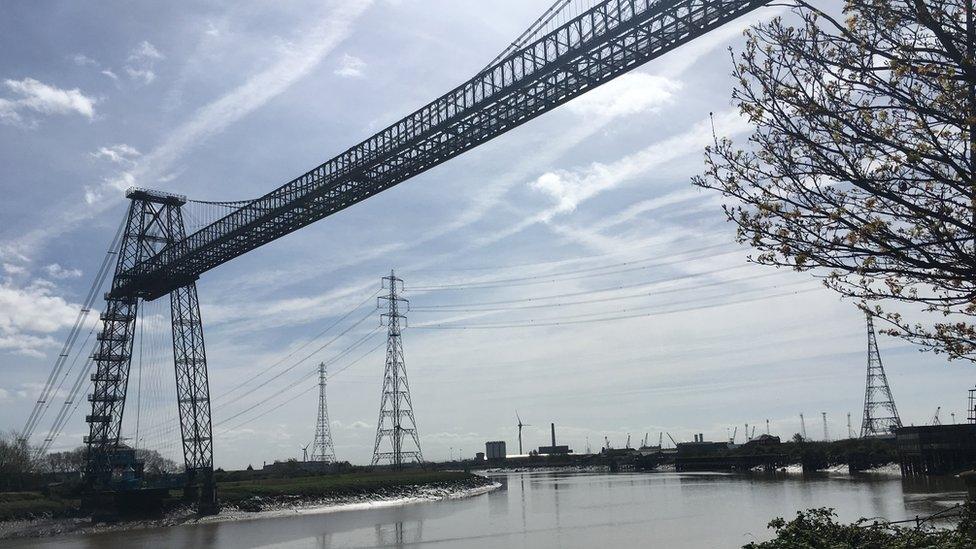Newport Transporter Bridge: A 'historical curiosity'
- Published
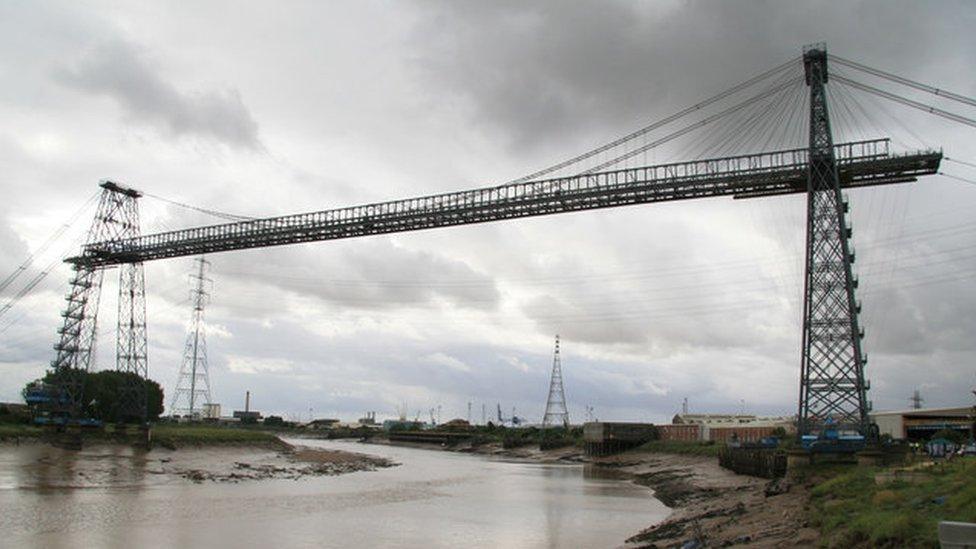
What do a Hollywood actress, a football team and a group of steelworkers have in common? Put simply, 1,400 tonnes of steel.
It may seem an unlikely combination but the Grade I-listed Transporter Bridge that dominates Newport's skyline has contributed to more than just the transport network.
Opened in 1906, it was built to take workers to and from Lysaght's steelworks.
But it has since featured in a film and has even been credited for sparking the beginnings of what is now Newport County FC.
Today it is one of only six operational transporter bridges left worldwide from a total of 20 originally constructed.
Many were damaged in war, while others were dismantled because they were no longer deemed viable.
But eight remain in Warrington, Middlesbrough, Rendsburg and Osten in Germany, Portugalete near Bilbao, Spain, Rochefort in France and Buenos Aires.
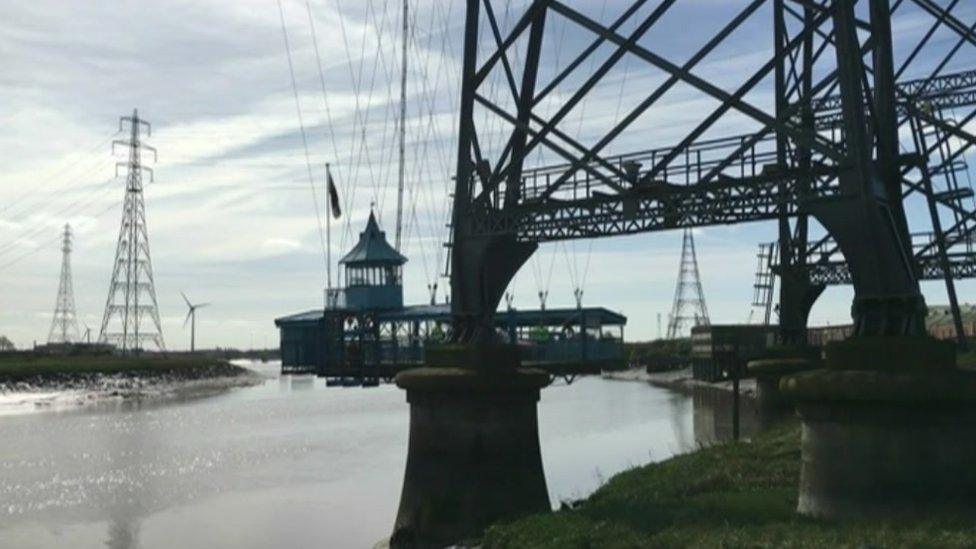
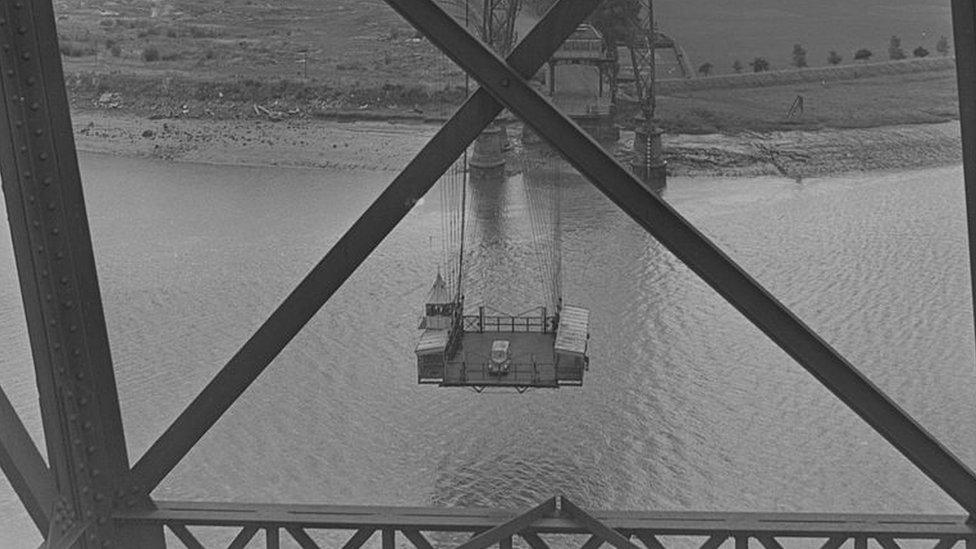
A view of the bridge from 1970
Why a transporter bridge?
In 1896, steelworks owner John Lysaght wanted to open a steelworks in Newport but was concerned staff living on the Pillgwenlly side of the River Usk would face a four-mile (6km) commute to the Lliswerry side as there was no crossing.
During that time, Newport was a busy port with most of its activity based further up river towards where the city centre now stands.
A conventional bridge would have prevented tall ships accessing the port, a tunnel was ruled out on cost grounds and ferries were difficult because of the extreme tides and previous fatal crossings.
A transporter bridge offered an economical solution and Parliamentary approval was secured in 1900, with work beginning in 1902.
Robert Haynes, along with French engineer Ferdinand Arnodin, who designed the first transporter bridge in Bilbao, were appointed joint engineers.
It cost £98,000 to complete and was opened on 12 September 1906 by Lord Tredegar of Tredegar House.

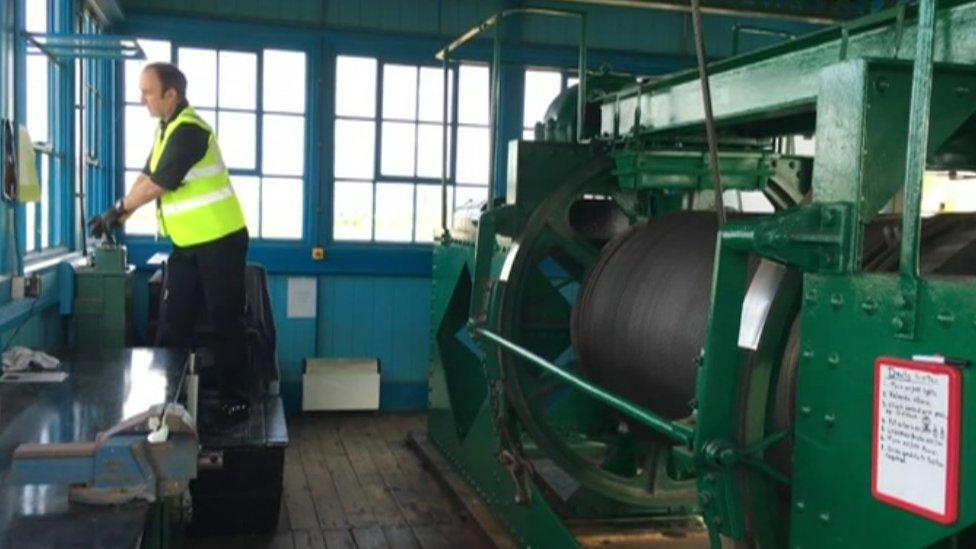
How does it work?
The bridge operates a gondola suspended from a moving carriage which is pulled from one side of the river to the other.
The carriage moves along the high level boom between the two towers, pulled by a hauling cable weighing 199 tonnes.
It is powered by twin 35 horse power electric motors and the original pair are still in use today.
The bridge is manually operated from its motor house, while two staff work on the gondola helping pedestrians, cars and cyclists get on and off.
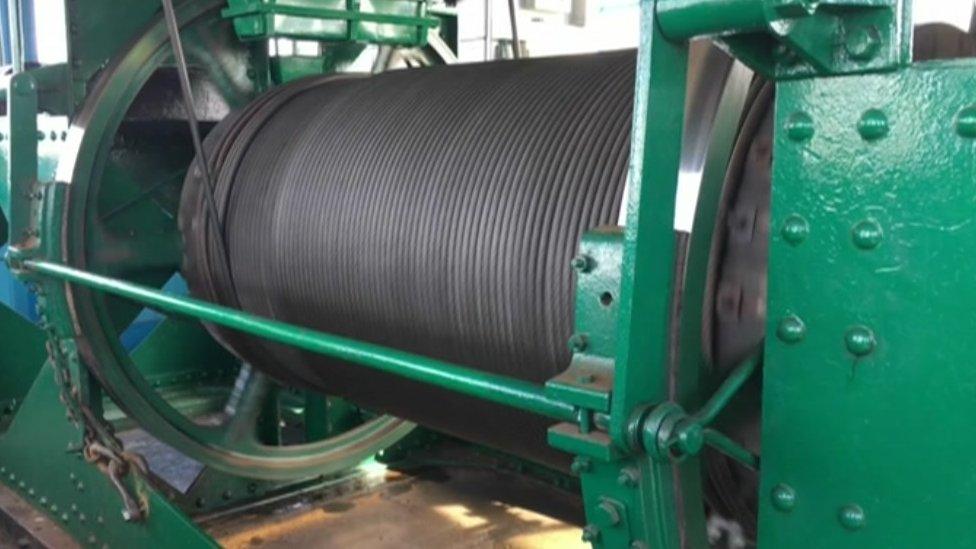

Bridge stats
74m (242ft) tall
Overall weight 1,400 tonnes
Gondola speed - 3m (10ft) per second
278 steps to the high-level walkway
Distance between towers 180m (592 ft)
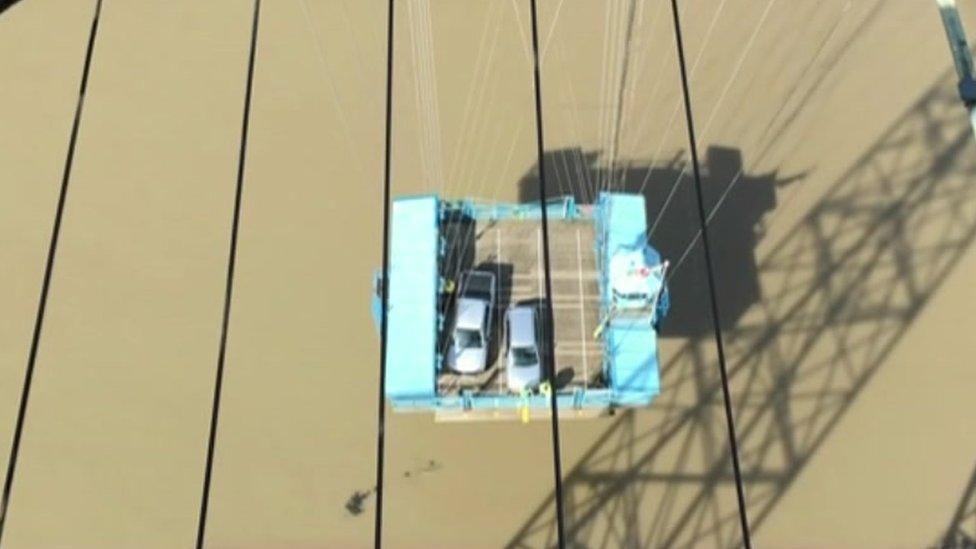
Bird's eye view - visitors to the bridge can walk across the high-level walkway
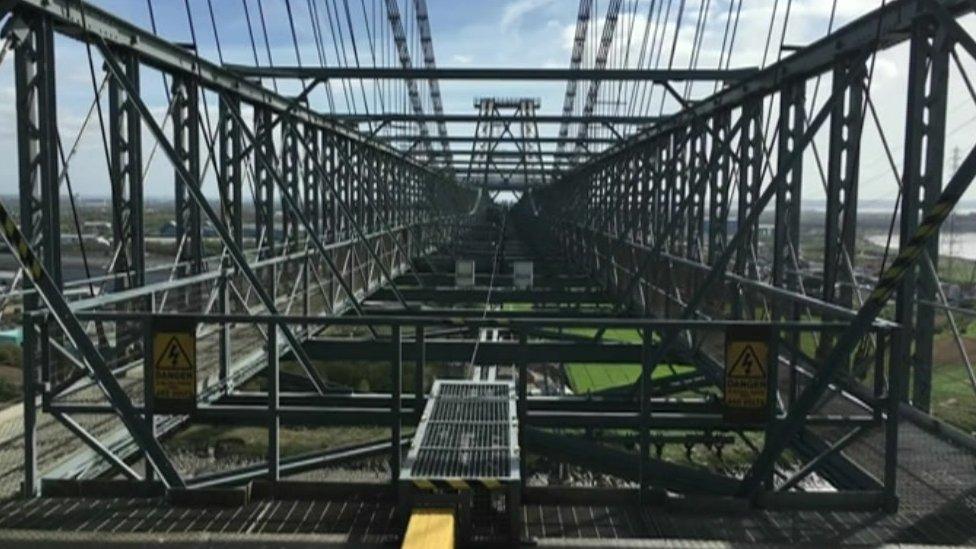
Don't look down...
David Hando, chairman of The Friends of the Newport Transporter Bridge (FONTB) which helps run the visitor centre, said the bridge had contributed to Newport's history.
"It is a historic curiosity, but a very important one," he said.
"Lysaght would not come and bring his company [to Newport] whilst there wasn't a way to get across the river.
"Mr Lysaght brought workers with him from Wolverhampton - they were football fans and they were coming from Wolverhampton to a rugby area and they were instrumental in setting up the old Newport County in 1912.
"Mr Lysaght was involved and the workers were the supporters. Newport County in 1912 was the first professional club here so it's all interlinked."
Decades later the bridge was thrown into the international spotlight when it featured in the 1959 crime drama film Tiger Bay, external.
It starred a young Hayley Mills who got on the bridge in Newport and - through the magic of cinema - got off at Cardiff docks.
Mills has maintained her link with the bridge and is an honorary life vice president of FONTB.
"She's always been interested and she's maintained that link with the bridge and we hope she'll come down some time," Mr Hando added.
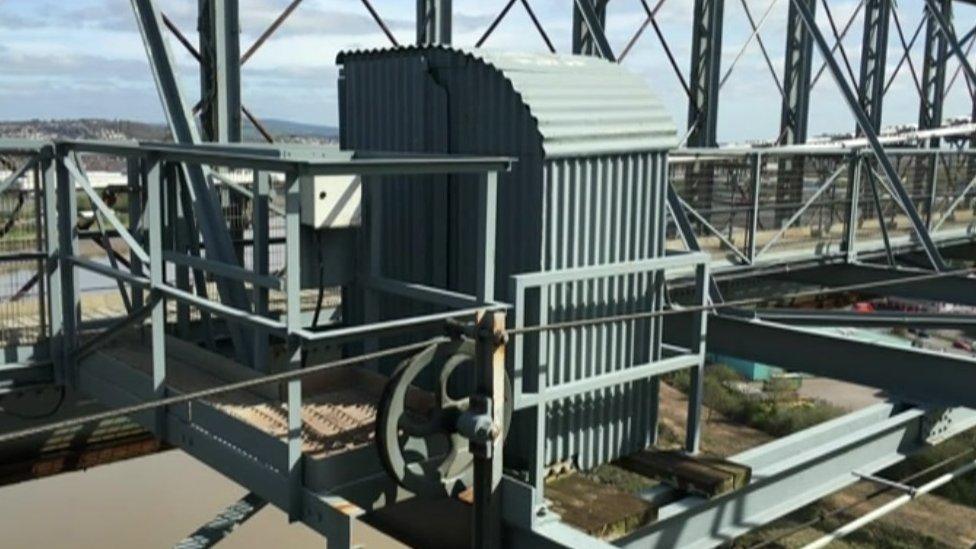
There's even a toilet - 74 metres up
In its heyday, the bridge was the main commuter route for workers and steelworks suppliers and later charges were introduced for other traffic.
In 1981, it was given Grade II-listed building status, but just four years later its condition had deteriorated so much it had to be shut on safety grounds.
It reopened a decade later in 1995, thanks to repairs funded by the EU and conservation body Cadw, and was later awarded its Grade I listing.
Later, in 2005, with the opening of a new bridge as part of the city's Southern Distributor Road, traffic across the transporter bridge declined as drivers opted for the quicker - and cheaper - route.
It closed again for further work in 2008 but reopened in time for the city to host the 2010 Ryder Cup.
But it is thanks to the way it was built - in small parts "like a Meccano" - that the ongoing maintenance work is relatively straightforward.
"If one bit gets rusty, they can replace it," Mr Hando said.
It also helps that its designer, Arnodin, gave the council a manual detailing what would likely need to be replaced and when.
Mike Lewis says the funding would help improve the visitor experience
Now, it operates mainly as a tourist attraction during the spring and summer months, attracting people from all over the world and allowing visitors to once again walk across the high-level walkway.
In a bid to improve the visitor experience and pay for further maintenance work, the council is bidding for £8m Heritage Lottery funding.
If successful, it will pay for work including restoring parts of the original gondola and repairs to the cable on the upper boom - all work the council's museum and heritage officer, Mike Lewis, said would help secure it for at least the next 30 years.
A bigger and better visitor centre is also planned.
But the council's main objective is to preserve it for future generations.
Mr Lewis said: "If the visitors' experience was improved then we could charge more for it and the cash flow improves considerably.
"The bridge is of a structure that cannot pay for itself but we can do things to help pay for it.
"It's a remarkable example of the technology of its time. In 1906 the houses around here would've been heated by gas and coal and this uses electricity.
"This must have looked like the future."
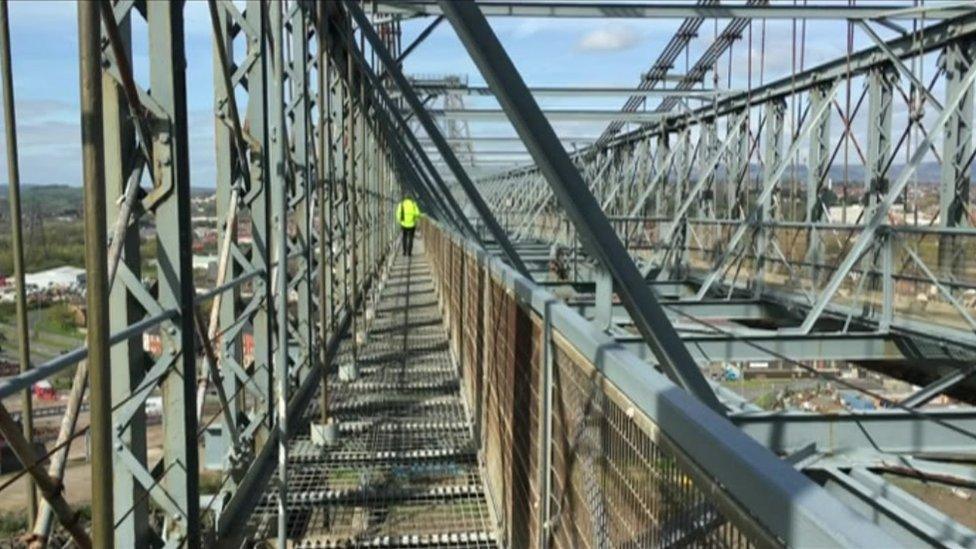
Visitors with a head for heights can walk across the top
- Published2 April 2013
- Published9 April 2017
